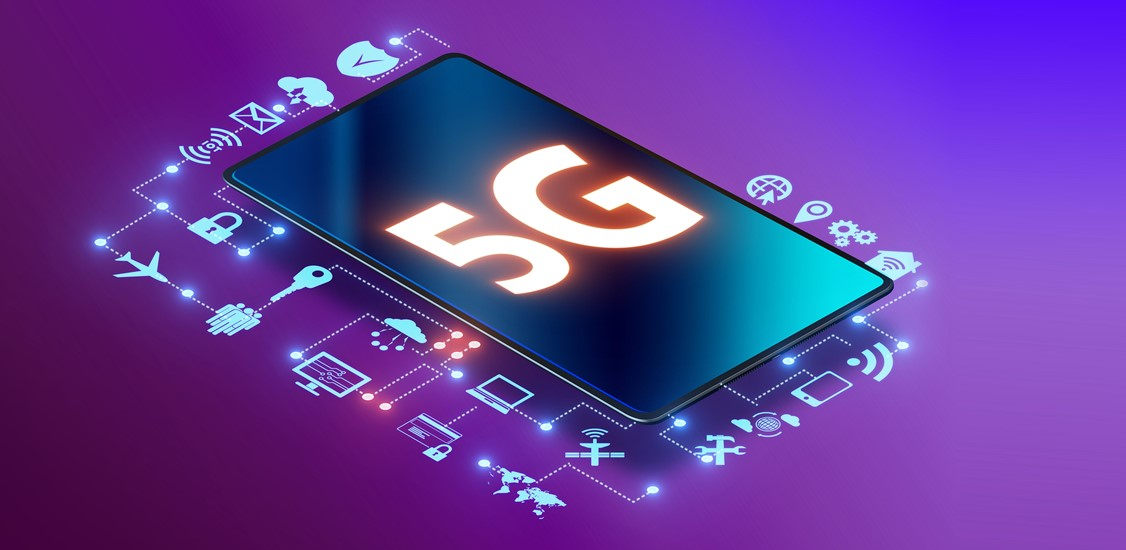We’ve heard it all when it comes to 5G. Proponents of the tech herald its revolutionary connectivity and data speeds, while critics argue the lack of near-term benefits. For the rest of us, however, it is often difficult to sort the fact from the fiction as this new telecommunications network rolls out around the world.
As this start to the decade (finally) comes to a close, it is worth reevaluating where the technology is and where it is going in relation to the Internet of Things. Let’s sort the truth from the hype of what 5G will bring to connected devices.
The truth about 5G
The physical infrastructure of the network might not yet be complete, but certainties surrounding 5G’s technical capabilities give plenty of reason for excitement. Studies show that 5G can deliver ultra high throughput - up to 4Gbps at peak speeds - which is set to boost connectivity to levels never seen before.
The potential for ultra high throughput combined with 5G’s low latency is what IoT industry insiders predict will push forward applications which depend on a data-rich environment. For example, 5G is likely to enable us to control more devices remotely in applications where real-time network performance is critical, such as remote control of heavy machinery in hazardous environments, thereby improving worker safety, and even remote surgery.
Until now, remote surgery using wireless networks has been impossible because the lag time between input and output lasts around a quarter of a second. 5G, on the other hand, reduces latency to an almost instantaneous 2 milliseconds between devices. In effect, 5G promises to make remote medical care a reality - and to be a change agent for the future of the industry. Of course, the IoT connection type for remote surgeries would need to offer direct communication and high security, like peer-to-peer, to enable peak network performance.
Not only will 5G connections be fast, but they will be reliable. Tests show that 5G can support one million connected devices per square kilometre - 10 times more than possible with LTE. This means supplying connection at massive events like football games and music festivals, and driving the smart city and smart building capabilities of the future. Technically speaking, there is a lot to be excited about when it comes to this technology - so what’s the catch?
5G’s hype problem
The catch is that hype always gives way to exaggeration or distortion. It is worth repeating here that 5G is not about spying nor about making phones obsolete. Rather, it is another step change in network performance like 3G and 4G.
In comparing 5G to previous network upgrades, expectations should be tempered about its revolutionary nature. Much like 3G and 4G, this latest generation of telecommunications will not change the world overnight. While it is likely, for example, to make possible the digitization of factory floors thanks to high sensor density, overhauls like this will not be instantaneous. Instead, adoption will be slow and such improvements will happen incrementally over the coming decade.
Ericsson AB’s latest Mobility Report points out there will be 550 million 5G subscriptions in 2022. If this timeline is anything to go by, we are still years away from connected devices becoming commonplace in remote surgeries or heavy machinery.
Lastly, and certainly on the wilder side of 5G misconceptions, I should take this moment to allay any misinformation you might have seen on social media. No, 5G does not cause cancer nor spread the coronavirus.
Where we’re (likely) going
It is easy to see why there are more questions than answers in this space as the year comes to a close. The rollout is nowhere near complete, the conspiracy theories are rampant, and much of the world’s attention has been elsewhere since March. For those of us keeping up to date with 5G for connected devices, however, there are two main elements which will shift adoption going forward.
The first is price. 5G is more expensive than other communication methods and this could prevent adoption by smaller device creators in these nascent years. This does not seem to be a problem for bigger device creators, on the other hand, which are fighting to bring this tech to the market at lower prices. The average selling prices of 5G phones fell by more than $200 from January to July, reaching an all-time low of $730. Meanwhile, 5G phones increased their share of total smartphone sales from 3% to 11% during the same period. Price is an integral component for device creators and device consumers, and it will be interesting to see how both parties react as the global network rollout reaches completion.
The second is energy. Connected device vendors will need to consider the energy impact of the next-generation network in terms of the product they are creating. If their device runs on battery and does not have any use case for 5G, for example, other lower energy technologies might suit better. Device creators, therefore, should be testing and experimenting as much as possible today in deciding whether the move to 5G makes sense tomorrow. Moreover, if creators do not test extensively, many new devices will not transition effectively with likely bugs reducing the potential gains that 5G has to offer.
Importantly, the energy considerations of the network are not only of interest to those creating the devices. Governments, who are increasingly looking for green solutions, are buoyed by the news that 5G networks are up to 90% more energy efficient per traffic unit than 4G networks. Government buy-in is always an integral element to technological change and this network’s energy efficiency credentials are only set to increase the appetite for adoption.
Heading into 2021, there are many more reasons to be excited than apprehensive about 5G. The network’s technical capabilities are without question and the device application possibilities are only bound by vendor imagination. While adoption is unlikely to occur overnight, this next phase in the evolution of telecommunications presents a world of new opportunities for connected devices.


















